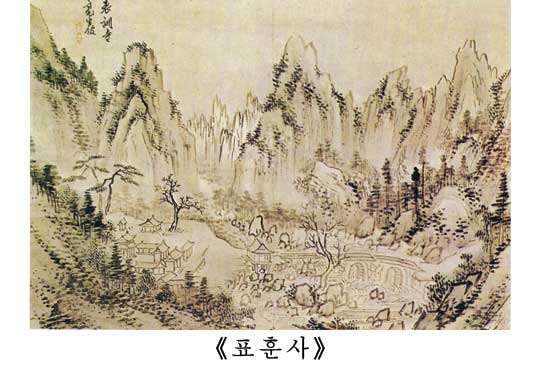Choe Puk, a representative artist of Korean painting, and his paintings
Choe Puk was one of the representative Korean artists of 18th century.
He was skillful at drawing figures, landscape, flowers and animals. Especially he was well versed in landscape, so that he was even called Choe Sansu (landscape).
Living in a poor family, he enjoyed drawing the beautiful mountains and waters of motherland, not drawing for the ruling circles.
A story has come down to this day that when a powerful aristocrat forced him to draw a painting he refused it by pricking one of his eyes.
His typical paintings are Mid-summer, Mt Kumgang, Phyohun Temple, Summer Scenery, Hawk and Rabbit and the like.
At the Mid-summer he presented the typical and impressive scene of mountains in summer with his fine strokes of brush.
This painting shows well his individual strokes and peculiar brushwork which gave an effect of solidity to the rocks and mountains by repeating delicate touches and presented a vivid picture of trees by applying pointillism in different light and shade. The old men looking at the mountains or having a chat and the children sweeping the courtyard or blowing the bellows that could be seen in the painting, demonstrate the coherence of nature and people and also produce intimate feelings.
Mt Kumgang takes the form of a geographical illustration beyond the established concept of a landscape painting but shows well the beauty of Mt Kumgang, fully retaining the formative effect and artistic quality as a painting.
With a deep affection for his native place, a firm constancy, and a clear conscience, he established his own painting style featured by a peculiar composition filled up with the objects, concise coloring and free strokes to vividly draw the characteristics of the objects, thereby, contributing to the development of Korean realistic painting of 18th century.
